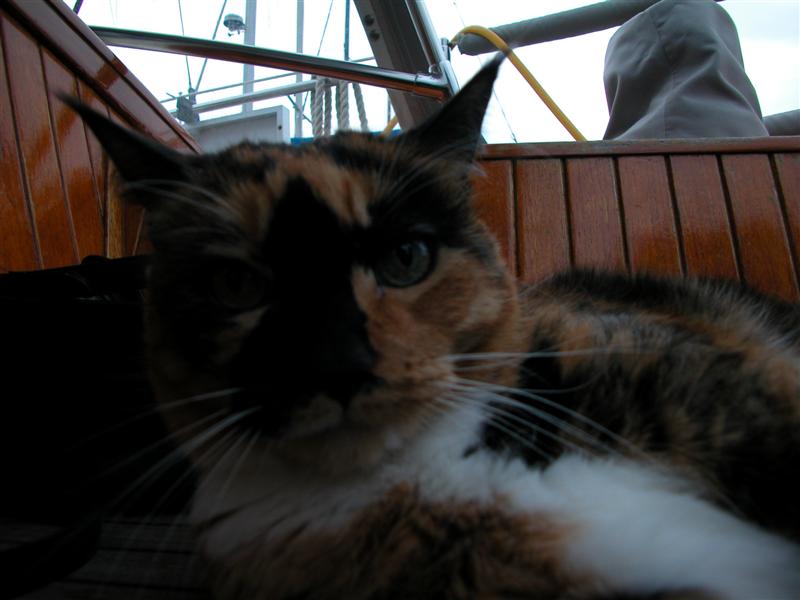
Our cat Killer was a very feisty tortie who died about six months before we set sail to go cruising in 2006. So we decided to head off without a cat aboard. Once out cruising you find boats are grouped into “kid”, “dog” and “cat” boats. For kids it’s to give them playmates and socialize the children. For pets it’s about having someone to look after your pets while you’re off the boat traveling inland.
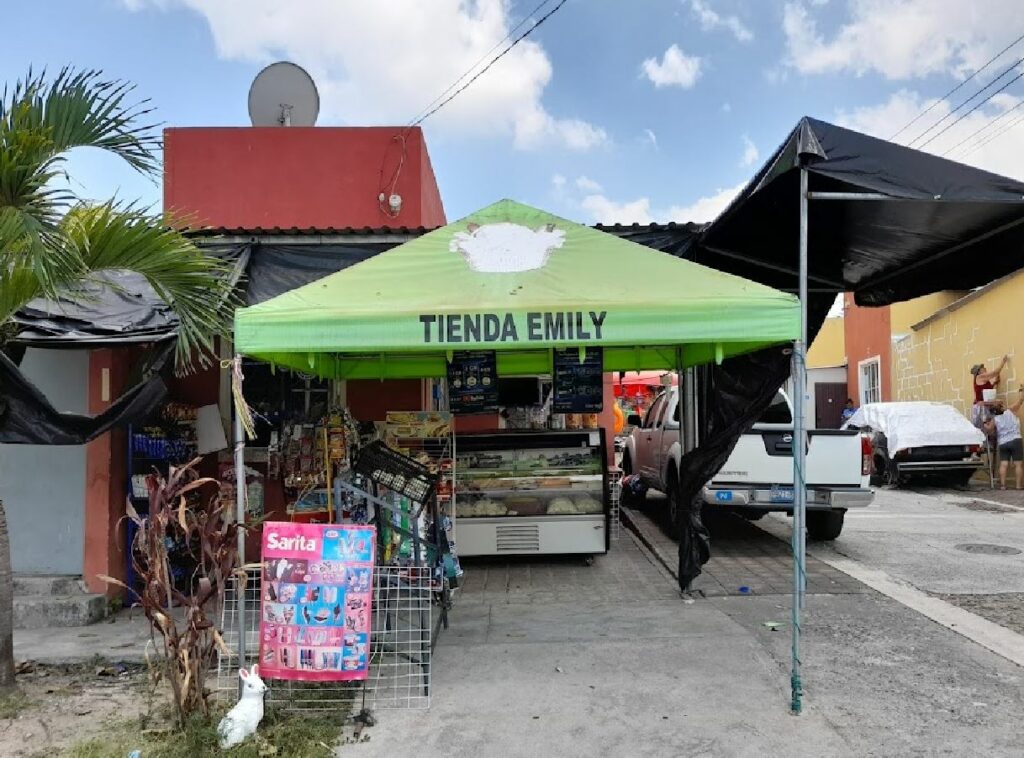
We met a cat boat named Mita Kuulu in Mexico and we both sailed south towards El Salvador. Once anchored in the estuary at Bahia Del Sol, we would go get our “kitty fix” and pet their golden tabby. One day Jean told me that Marta’s Tienda ashore (now is Tienda Emily) had a litter of tabby kittens. We told Jean we really were fond of a more spirited Calico or Tortie, and would pass on the tabby kittens.
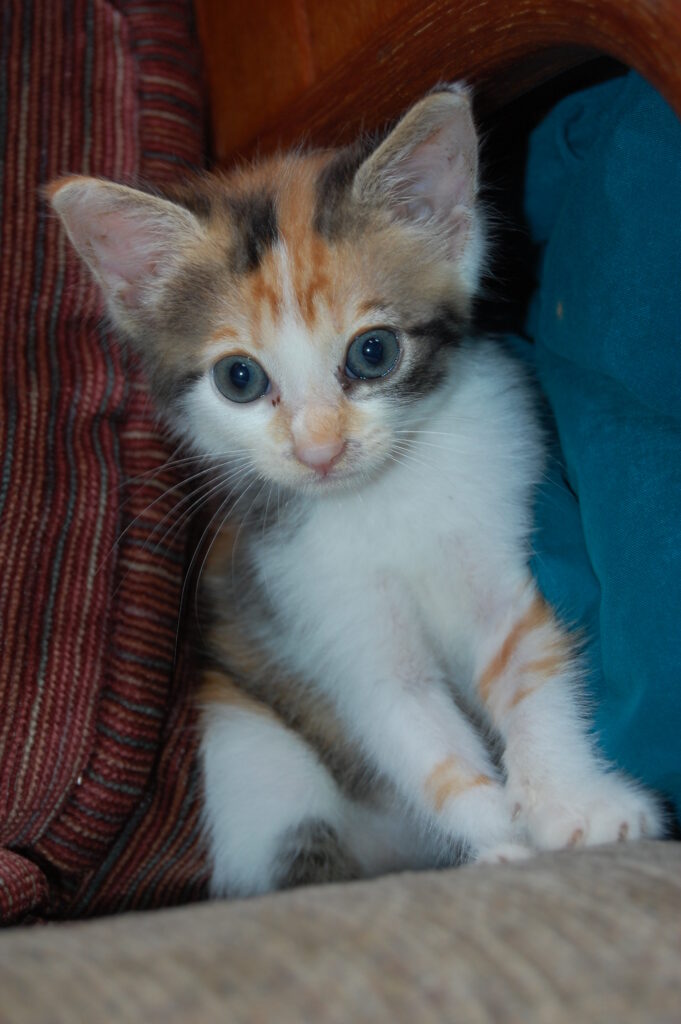
That evening we stopped at Marta’s for food supplies on the way to a Pupuseria for dinner. I took two steps into the shop and felt something land on my right foot. I looked down, then told Rob “ohoh, look what’s on my foot”. It was the cutest little calico kitten.
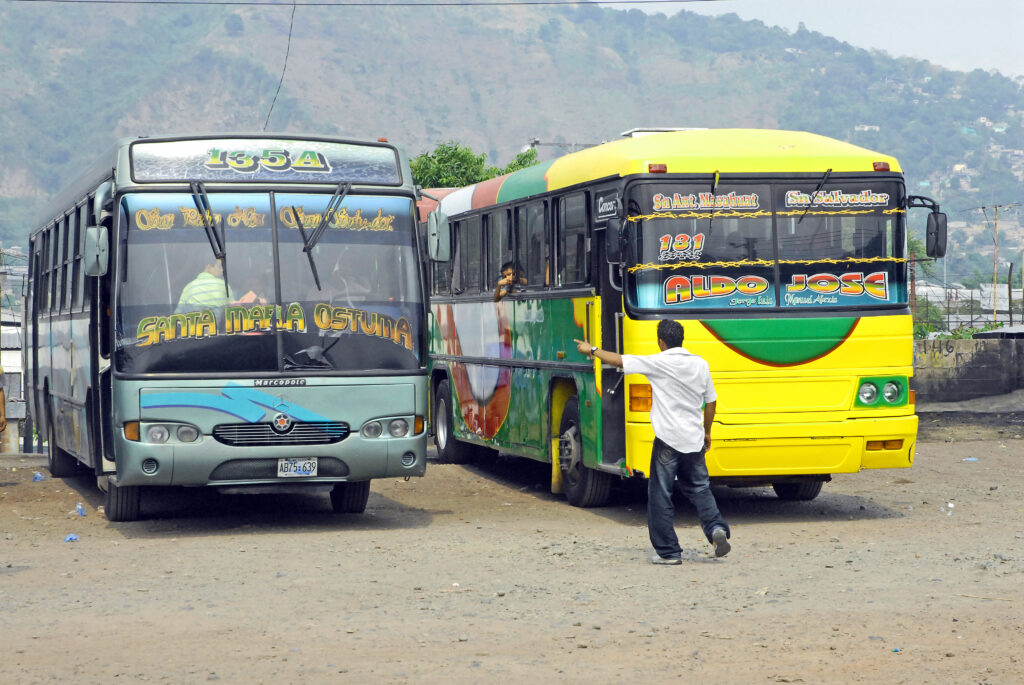
The next morning Rob was on an El Salvadorian “Chicken Bus” into San Salvador, looking for supplies. El Salvador, like many nations in Central America, buys old yellow school buses to use for rural bus routes. The story of Chicken Buses is a tale of its own.
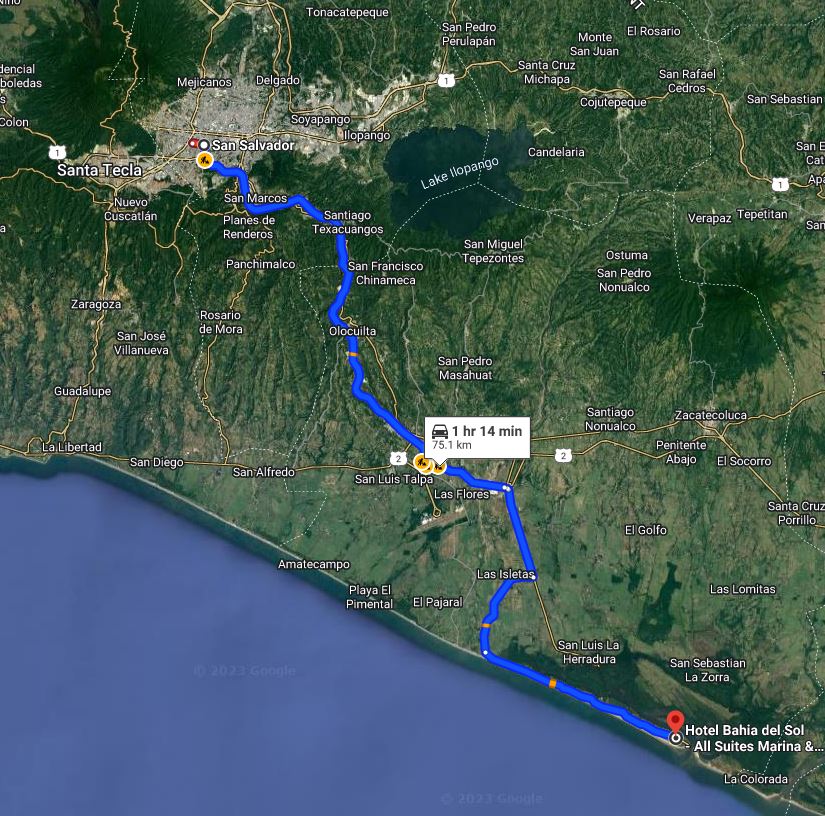
Our anchorage was two hours from the capital by bus, the only place he might possibly find a vet, cat food, cat litter and all the things we would need to take a kitten aboard. El Salvador was only recently free of it’s decades long civil war, and few locals had the means to keep cats as pets.
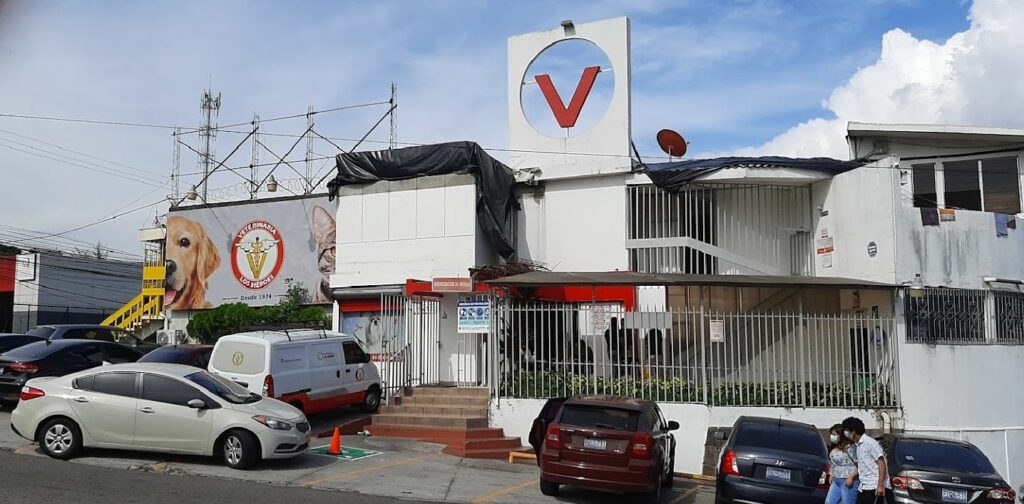
Once in San Salvador, Rob took buses and walked to nearly every vet in town in order to collect all that he needed, and in the process made an appointment with one of the vets for a checkup for Maya. He returned to Bahia del Sol and we went back to Marta’s and picked Maya up and took her home. Our only regret was that we didn’t also take a sibling and playmate for Maya.
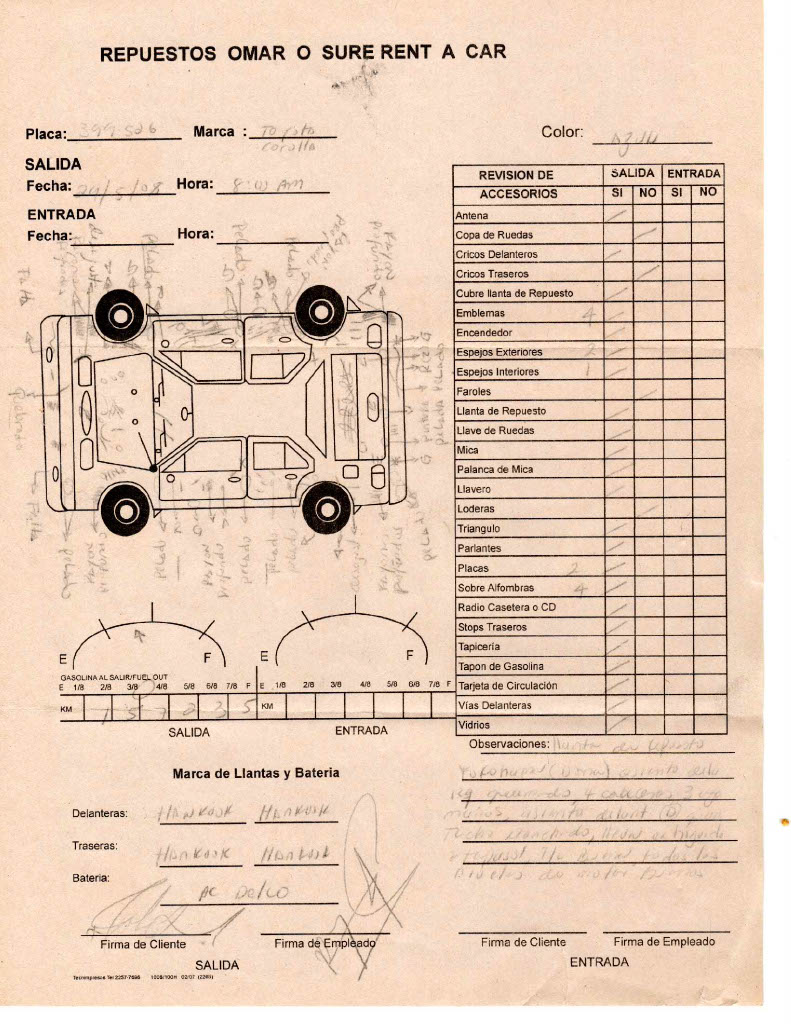
Two days later we rented a car and took Maya into San Salvador to the vet. Renting a car in rural El Salvador is also another story – notice above all the marks on the rental form showing existing damage on our car! Maya was given an exam, worming meds and flea meds and the vet said that while she was healthy, she surely wasn’t the eight weeks old that Marta had maintained – likely she was 4 to 6 weeks old. The only challenge that day was convincing the vet tech that she did not get to keep Maya when the appointment was done.

Two days after that we set sail across the river bar and out into the Pacific Ocean. We had a relatively mild bar crossing but found very confused seas on our way to Costa Rica, as the Inter Tropical Convergence Zone had moved very far north and the weather was extremely unsettled with squalls and shifting winds.
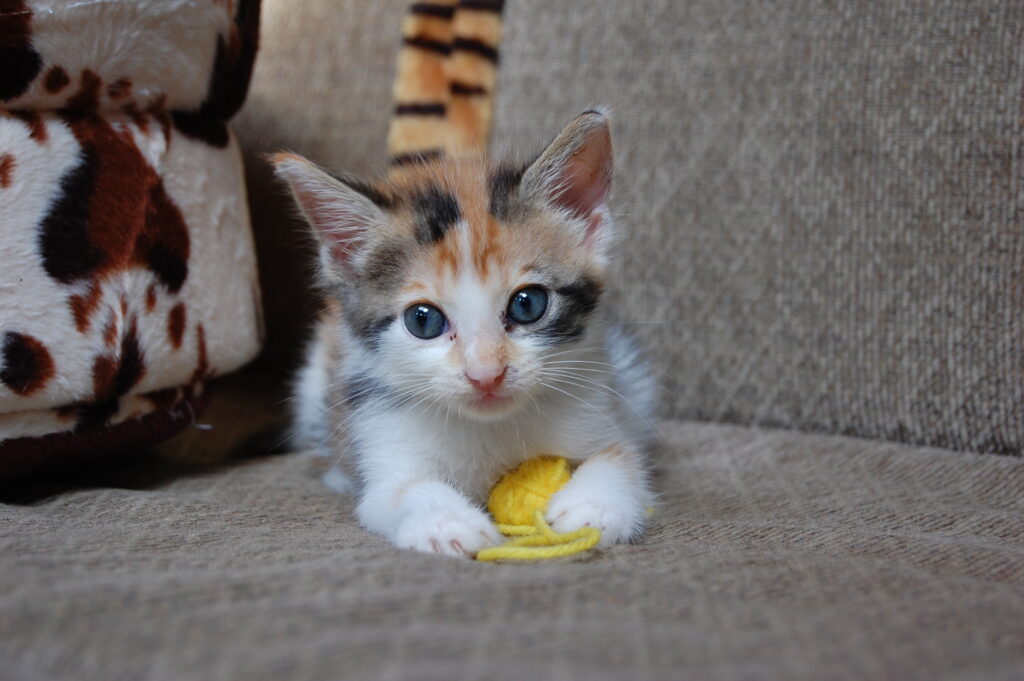
Maya did great, not even noticing the pitching and rolling of the boat – much better than the crew who had been on anchor just a little bit too long. She had natural sea legs and took to the boat without hesitation. Likely it had to do more with her newly full belly and lack of worms and fleas.
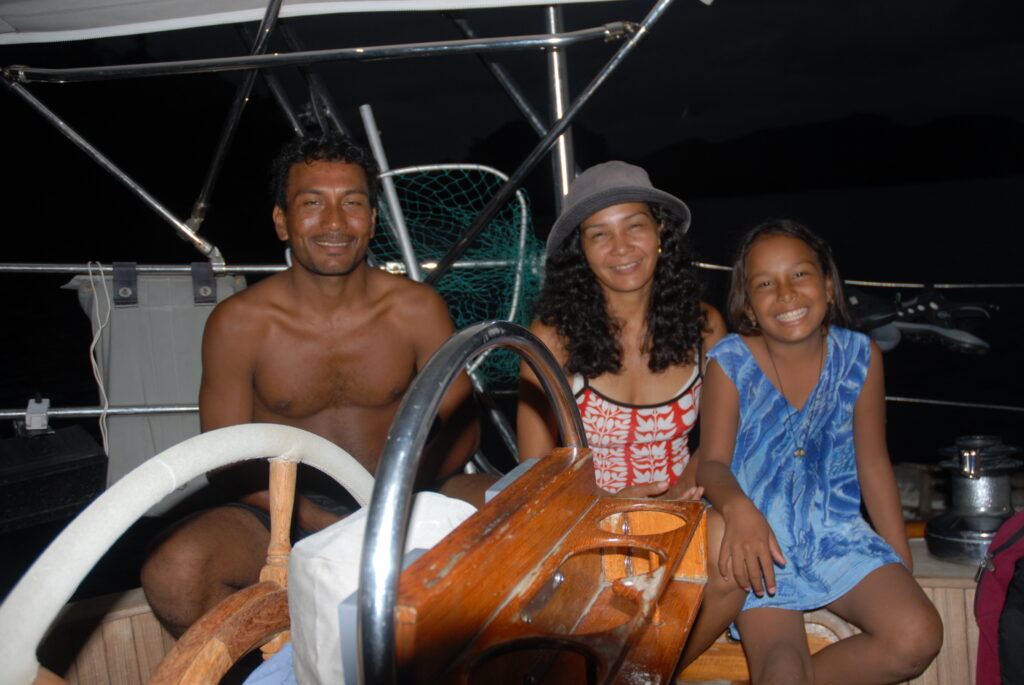
The following January we were anchored in Bahia Honda in Western Panama. This is a very remote location with zero opportunities for the locals to prosper financially. They were exceptionally friendly folks and came to the boat in their kayukas to trade home grown food for goods. I was happy to host a young couple named Kennedy and Olivia onboard for a meal and trade away lots of “new to them” clothing items. As they were leaving, Olivia looked below in the boat and exclaimed loudly “Una cama por La Gatita?!”. Maya was laying in the big bed Rob had bought her in San Salvador. Sadly it was likely a nicer bed than Olivia’s children had at home. We were invited to their home the next day but unfortunately had a weather window we could not miss and left Bahia Honda.
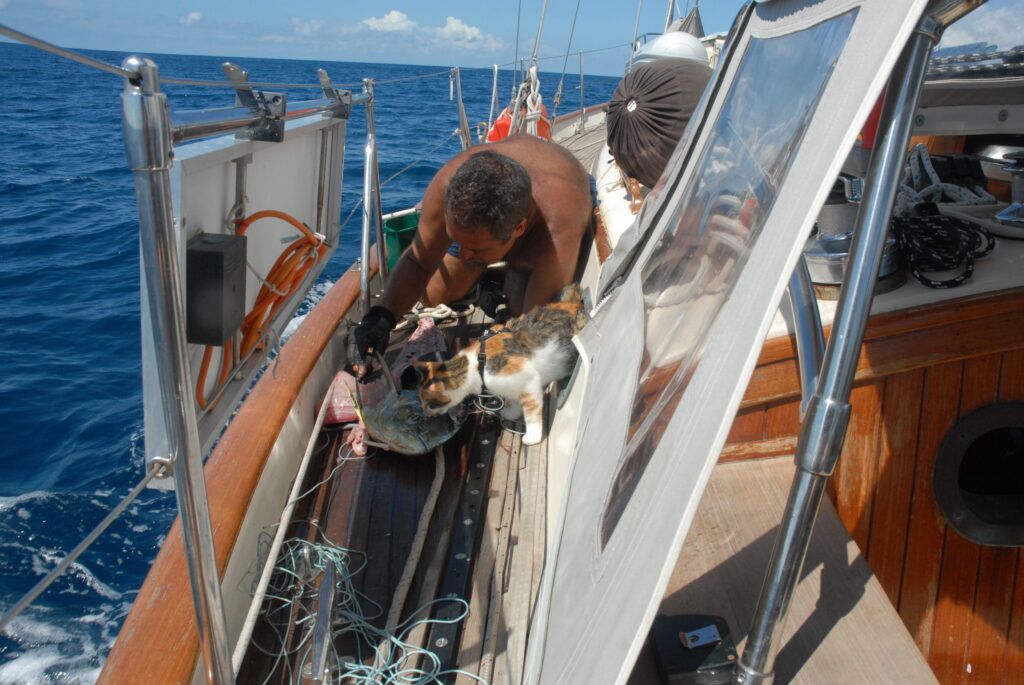
One thing Maya did love was fresh Mahi Mahi. The ship’s captain was particularly good with a hand line and caught an abundance of delicious fish. The first time Maya observed a Mahi being cleaned on the side deck she was hesitant, that is right until she had her first taste of fresh seafood. After that she would beg and eat until she was sick.
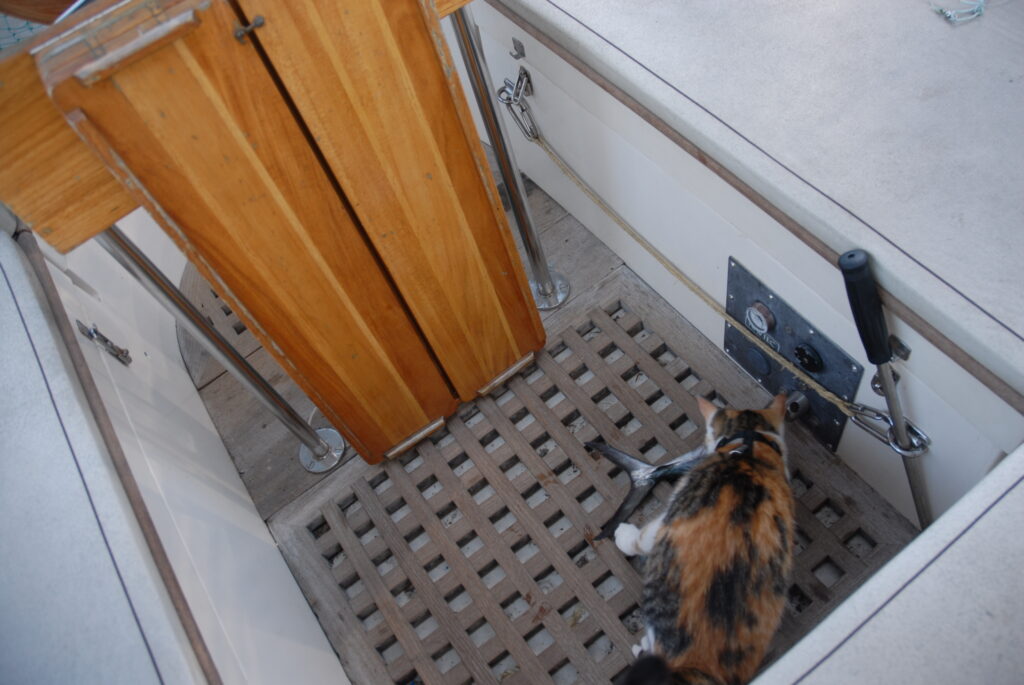
She also had a belief that fishes came to her from heaven. On night watch during passages we would not allow her out of the cockpit and forward on deck. Occasionally a flying fish would land in the cockpit well and she would come and eat everything except the bone holding the wing. One particularly hot and calm night we had the overhead hatches open and a squid managed to jump out of the water all the way up through the hatch, and fell inside the boat and onto the chart table where Maya was sitting. We had to run fetch it and toss it back overboard before a squid ink disaster happened inside. After that she was forever waiting for more fishes from heaven.
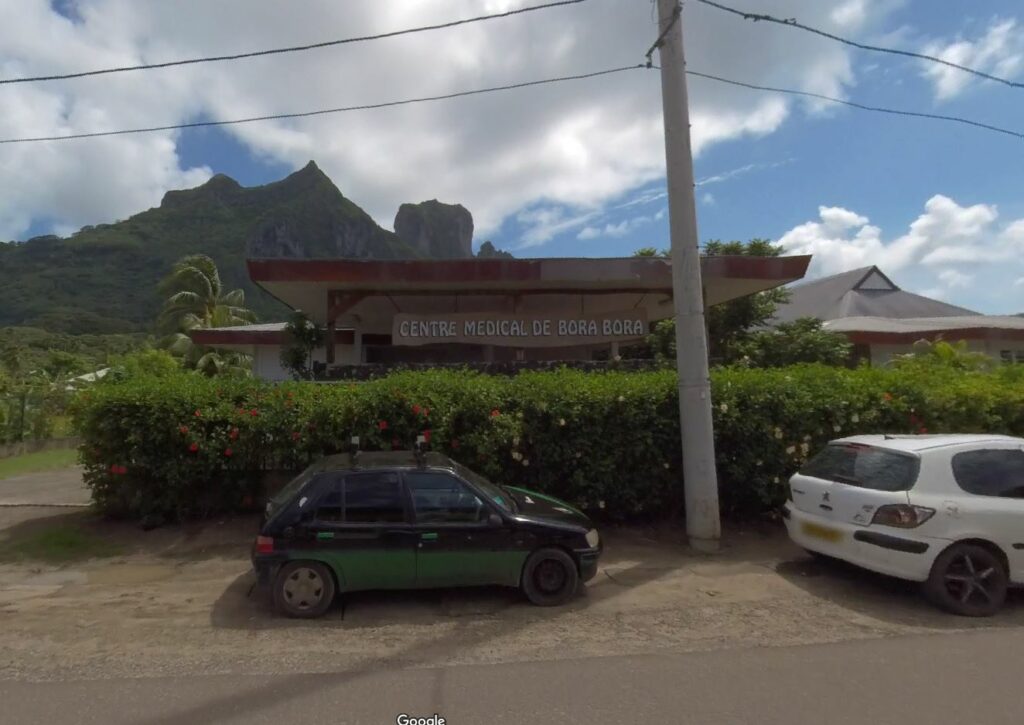
One year after Maya came aboard, after sailing to South America, back to Central America and then across into the South Pacific, we were in French Polynesia preparing Maya for travel to New Zealand. They, like many Pacific Island nations do not have rabies, (and also have only endemic bird ticks in NZ), so they are very strict about allowing domesticated pets to be imported. Multiple blood draws had to be done at specific intervals and sent to a lab in Australia. The first was in Papeete, where there was a traveling French Veterinarian on anchor who came to the boat. In Bora Bora we had to take Maya ashore to a vet, her first trip off the boat in over a year. I can still hear her yelling louder than the 15 hp Merc, objecting mightily to the dinghy ride.

The blood tests were all done and we were ready to import Maya into the Land of the Long White Cloud, but then life happened to the crew. Rob’s dad called to say he was sick and it was diagnosed as cancer. When we left Tonga we had to turn north, watching our friends all turn south to New Zealand. We crossed through Micronesia, making plans for our final passage home via Japan.
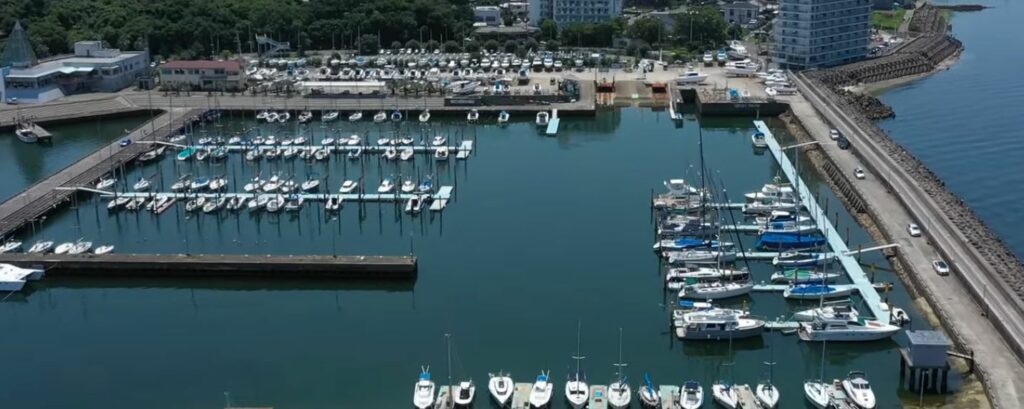
But of course, Japan also has restrictions on domestic animal imports due to absence of rabies. We did manage to convince the authorities that we were not importing Maya, only transiting through, and she was allowed to stay onboard during our visit. We were at a dock for the first time since she came sailing, and stayed for a month to visit and wait for optimum time to cross the North Pacific. It was summer in Japan and the weather was too warm to keep the boat closed up, so Maya was allowed to roam on deck. The funny thing was that the dock was painted blue. Maya had been in the water once and knew that was not her happy place. She would sit on the cabin top and look over at the dock, then over the other way to the water and try to work this out. We were very careful to make sure she never saw us coming or going and didn’t know we could actually walk on the dock. We had been advised to call in on the radio as we departed Japanese waters, and when we did we were told very sternly to properly bio clear our cat correctly next time.
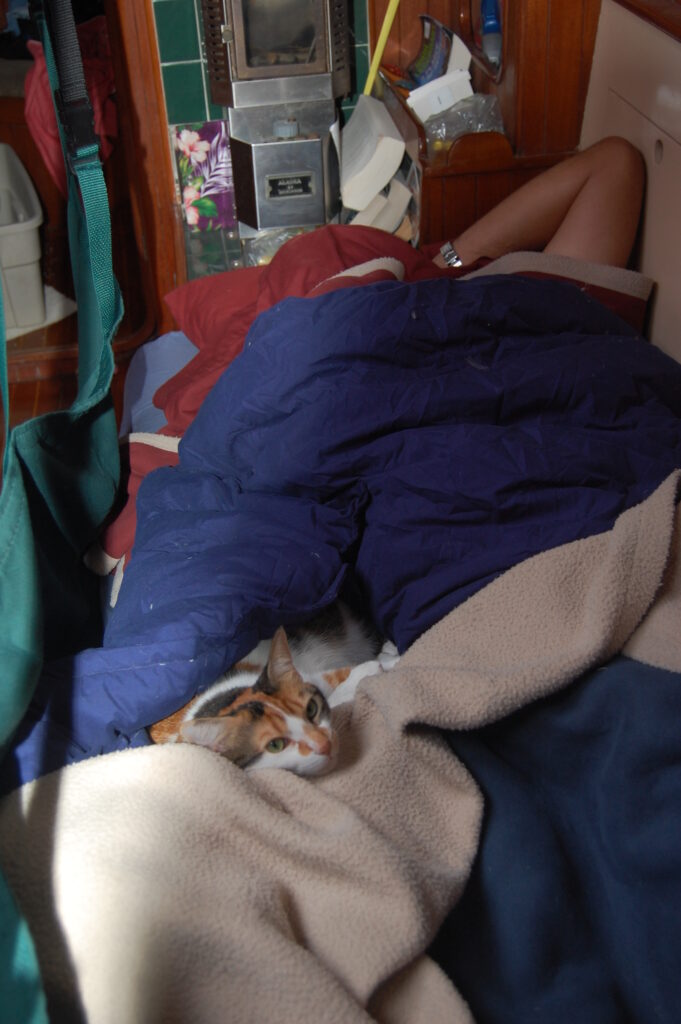
Maya was not a particularly cuddly kitten, perhaps because of her feral and hungry start in life. But she had always been in warm climates until we sailed across the Kuroshiro Current and out into the North Pacific. Suddenly she realized why the off watch was snuggled underneath down comforters in the sea berth and was happy to crawl in and warm up.
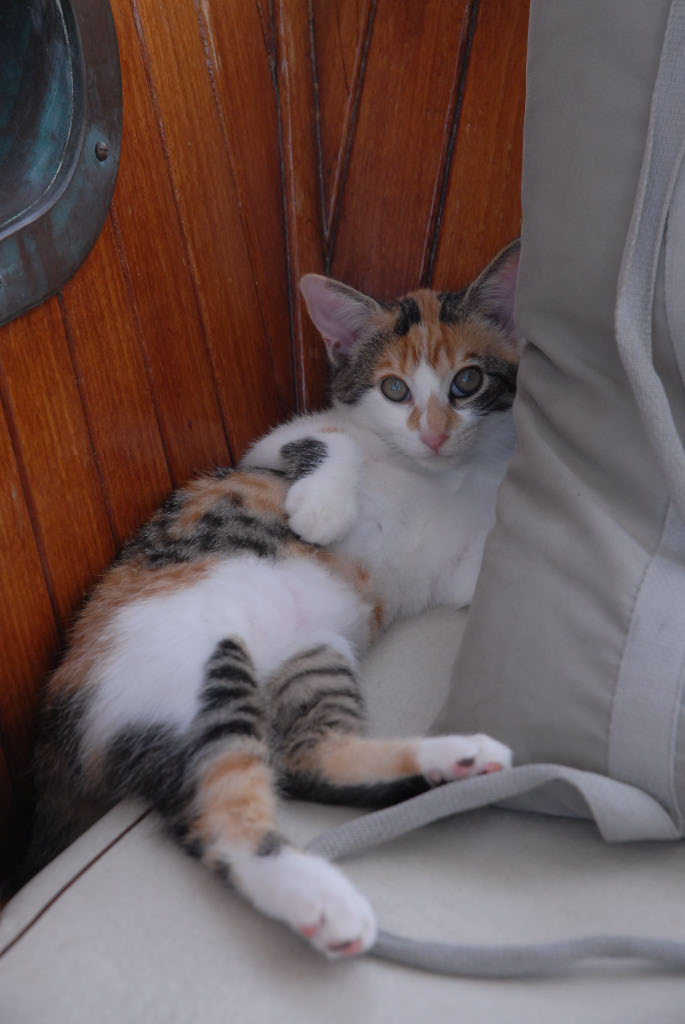
We arrived home 42 days later and stayed at the home of friends who were out sailing for the summer. For the first time in her life Maya had the freedom to run. The house we stayed in had an unusual configuration on the ground floor where she could literally run circles through all the rooms without turning around. So she ran, and ran, and ran. She was now two years old and for the first time free to move further than forty feet.
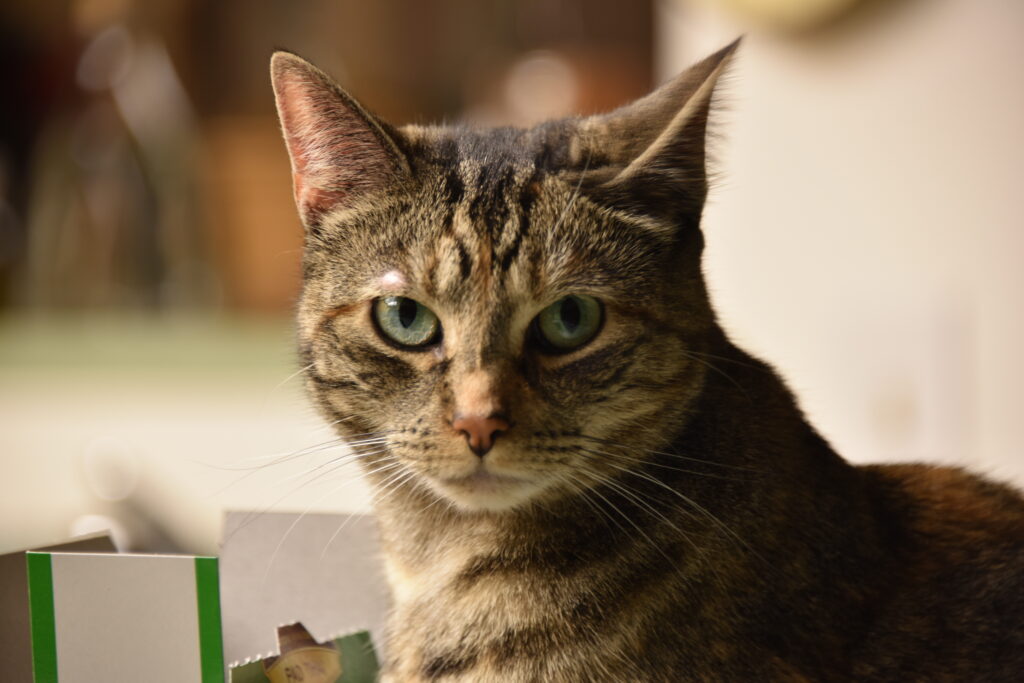
We stayed aboard the boat that winter, getting a second cat to keep Maya company. Unfortunately the two did not bond and lead very separate lives. The following spring we bought a house in the woods on Bainbridge Island.

We researched what it meant to let the cats outside and believed we were safe from coyotes as long as they were only out during the day. That, unfortunately turned out to be false, and Maya was taken by a coyote in on a bright beautiful day in December 2011 while we were out putting up holiday decorations.
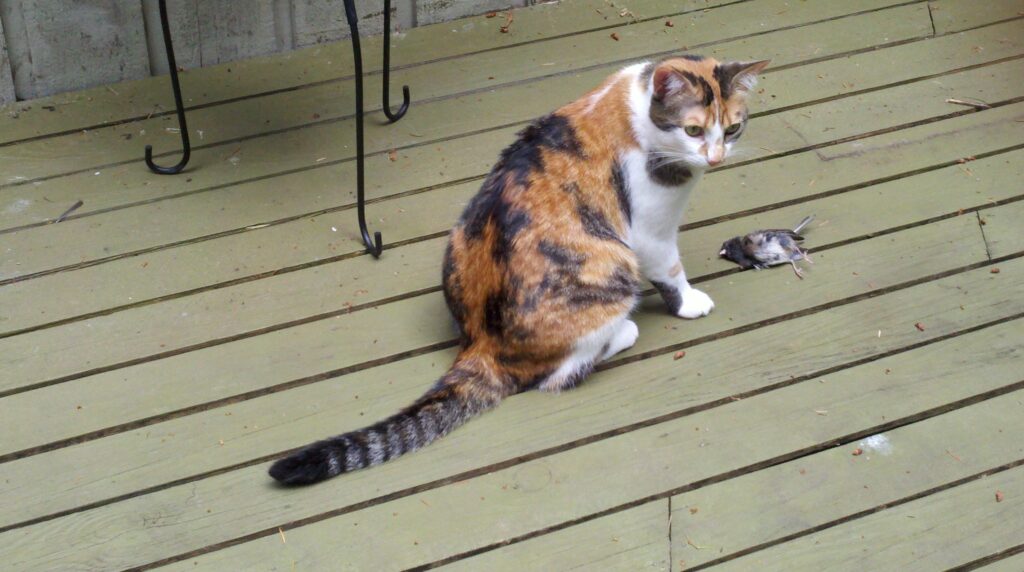
Our other cat Marni was a prolific hunter, but Maya, it turns out, was not a very good hunter. We would watch again and again her failed attempts at catching any of the numerous shrews and voles on the property. One of the last pictures we have of Maya is the day she finally caught a bird and we snapped a shot of her proudly bringing it home to show off.
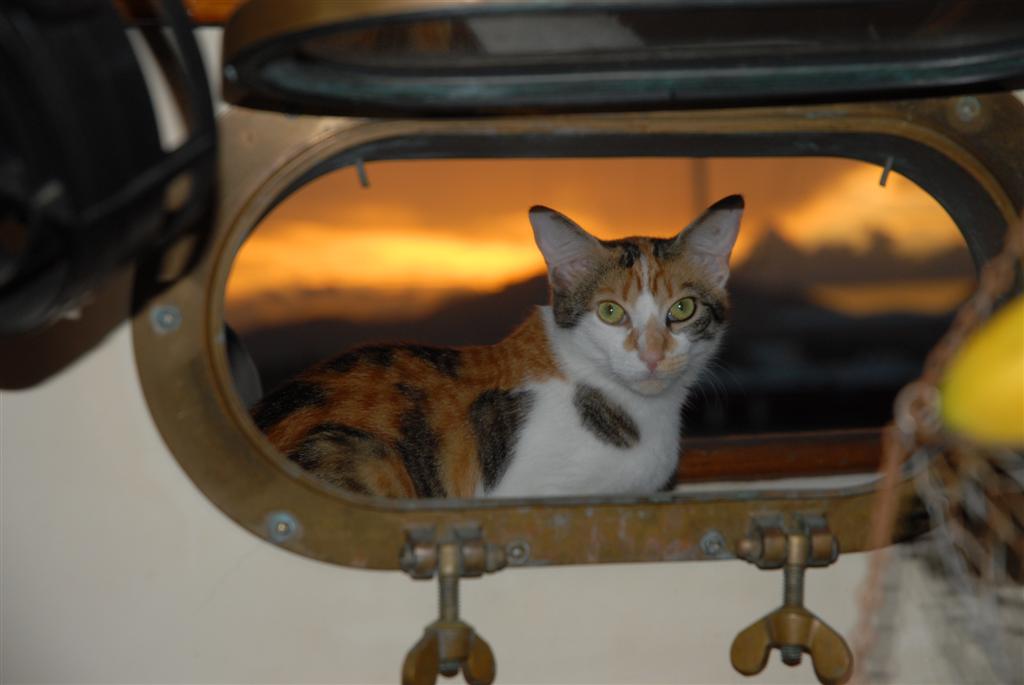
While out hearts are still broken that we didn’t know the coyotes here will walk through our yard mid day without a care, we do know that Maya’s life was years longer than any of her siblings and most all of the cats in Central America. She was an exceptional boat cat and we miss her every time we go aboard.